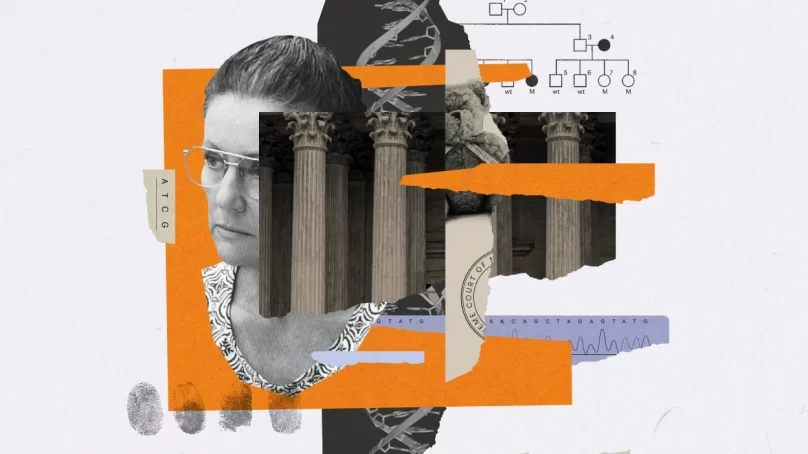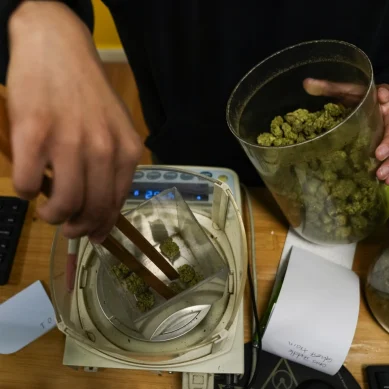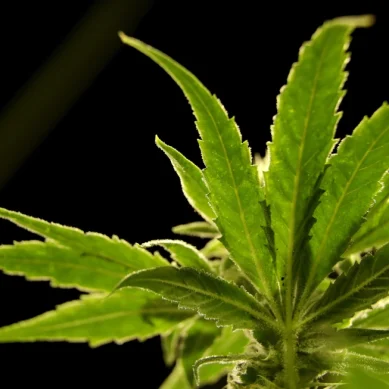
Around lunchtime on a warm March Day in 1999, Kathleen Folbigg went to check on her sleeping 18-month-old daughter and found her pale and unresponsive. Folbigg, alone in her house in Singleton, Australia, called an ambulance while she tried her best to resuscitate the child.
“My baby’s not breathing,” she said, pleading for them to hurry. “I’ve had three SIDS deaths already,” she explained, referring to sudden infant death syndrome – a largely unexplained phenomenon that typically affects infants in their first year as they sleep.
Around 9pm that night, pathologist Allan Cala conducted an autopsy on the baby, named Laura, at the New South Wales Institute of Forensic Medicine in Glebe, a suburb of Sydney. In his report, he noted no evidence of injury and no medications, drugs or alcohol in her system. He mentioned some inflammation of the heart, possibly caused by a virus, but surmised that it could be incidental.
Instead, Cala opined on the improbability of four children in the same family dying from SIDS. “The possibility of multiple homicides in this family has not been excluded,” the report stated.
Four years later, in May 2003, a jury found Folbigg guilty of murdering three of her children – Patrick, Sarah and Laura – and of the manslaughter of her first son, Caleb. Because there were no physical signs of foul play in any of the deaths, the case had rested entirely on circumstantial evidence, including the unlikelihood of four unexplained deaths occurring in one household. Lightning doesn’t strike the same person four times the prosecutor told the jury.
Folbigg was sentenced to 40 years in prison and became known as Australia’s worst female serial killer. But in 2018, a group of scientists began gathering evidence that suggested another possibility for the deaths – that at least two of them were attributable to a genetic mutation that can affect heart function.
A judicial inquiry in 2019 failed to reverse Folbigg’s conviction, but this month, the researchers will present a bolus of new evidence at a second inquiry, which could ultimately end in freedom for Folbigg after nearly 20 years behind bars. More than 90 scientists signed a March 2021 petition arguing for her release on the basis of that evidence.
The inquiry will have to grapple with how science weighs the evidence for genetic causes of disease and how that fits with the legal system’s concept of reasonable doubt. But it will have help. Thomas Bathurst, the retired judge leading the inquiry who will decide Folbigg’s fate, has granted permission for the Australian Academy of Science in Canberra to act as an independent scientific adviser.
The academy will recommend experts to give evidence, and will look at questions asked of those experts to ensure their scientific accuracy.
This will probably present the science more accurately than at the original trial, says Jason Chin, a legal academic at the University of Sydney who studies the way science is used in courts. And this case could have implications for how Australian legal proceedings consider scientific evidence in other cases, says Chin.
Folbigg’s four children died over a period of ten years. Caleb was just 19 days old in 1989 at the time of his death. Patrick and Sarah were 8 and 10 months old, respectively. Soon after Laura’s death, Folbigg was placed under suspicion and eventually stood trial in a case that became a dramatic public spectacle. At the time, multiple SIDS deaths in a single family were viewed with suspicion, particularly against mothers.
That suspicion traces at least in part to Roy Meadow, a British paediatrician who studied child abuse. In 1997, he popularised the idea that “one sudden infant death is a tragedy, two is suspicious and three is murder, unless proven otherwise”.
At Folbigg’s trial, this line of thinking clearly influenced some experts’ testimony. And several leading pathologists testified that they had never come across multiple SIDS deaths in one family, implying that it was all but impossible – despite there being such cases in the literature, says Emma Cunliffe, a legal scholar at the University of British Columbia in Vancouver, Canada, who wrote a 2011 book about Folbigg’s case called Murder, Medicine and Motherhood.
In fact, by the time the trial started, scientists had been expressing concern about Meadow’s idea for a number of years, and particularly its use in legal cases. Sally Clark, a mother jailed under similar circumstances in the United Kingdom, had successfully challenged her conviction partly on the basis that Meadow’s arguments were statistically unsound and made unsupported assumptions about the rate of SIDS.
The idea was largely discredited by 2003, and Meadow was eventually struck from the UK medical register in 2005 because of misleading testimony he had offered during Clark’s trial.
But Folbigg had other circumstantial evidence weighing against her, says Cunliffe. A selection of diary entries in which Folbigg expressed guilt and remorse about her deficiencies as a mother were presented by the prosecutor essentially as a confession.
The prosecution’s case relied heavily on the testimony of her husband, Craig Folbigg, who, on reading the diaries, became convinced that his wife had killed their children. The jury agreed. Several attempts to appeal the decision failed.
Folbigg has always maintained her innocence, however, and has not stopped fighting for her freedom. In August 2018, after a petition from her lawyers, the attorney general of New South Wales, Mark Speakman, announced that there would be a review into her convictions on the basis of fresh evidence around multiple cases of unexpected death in the same family. This would result in the first inquiry into the conviction.
As part of their preparations for the inquiry, Folbigg’s lawyers approached Carola Vinuesa, a geneticist at the Australian National University (ANU) in Canberra at the time, to sequence and analyse Folbigg’s DNA. The idea was to see whether she carried any mutations that, if inherited by the children, might offer an alternative explanation for how they died. Vinuesa agreed to help. Her colleague, Todor Arsov, a geneticist who lived in Sydney, travelled to the nearby Silverwater Women’s Correctional Centre, where Folbigg was being held, to collect a sample from her.
That December, Arsov joined Vinuesa in her kitchen to scroll through sequence data looking for variants linked to sudden death. Within 20 minutes, they both came across something interesting: a variant in a gene called calmodulin 2 (CALM2).
Humans have three calmodulin genes, encoding identical proteins that bind to calcium and control its concentration in cells, which helps to regulate the heart’s contractions, among other things. Mutations in these genes are extremely rare, but people who have them often have serious cardiac conditions; sudden deaths have been reported. Vinuesa thought the find was worth further investigation. She suggested to Folbigg’s lawyers that they attempt to sequence DNA from the children and their father.
By this point, the inquiry was underway, and Vinuesa was asked to join a team of genetics and cardiology experts who would provide advice. In early 2019, the experts met. They included geneticist Matthew Cook, a colleague of Vinuesa’s at ANU, who joined remotely, and three genetics specialists from the state’s health department in Sydney.
Jonathan Skinner, a paediatric cardiologist and cardiac electrophysiologist at Starship Children’s Hospital in Auckland, New Zealand, also joined by video link.
Scientists had managed to obtain DNA from the four children. A hospital in Sydney had Sarah’s frozen fibroblast cells from her autopsy in 1993, and the coroner’s court in Glebe had frozen liver tissue from Patrick’s 1991 autopsy.
A laboratory in Melbourne sequenced a whole genome from one child’s heel-prick samples, which are routinely collected at birth, and retrieved just the protein-coding portion of the genome from another’s heel-prick card. Craig Folbigg declined to provide DNA.
By agreement, the experts separated into two groups to analyse the Folbigg genomes. Vinuesa and Cook, from Canberra, formed one. The experts from Sydney – genetic pathologist Michael Buckley, clinical geneticist Alison Colley and Edwin Kirk, who specialises in both fields – formed the other, with input from Skinner.
Members of both teams either did not respond to or declined requests for interviews with Nature to avoid jeopardising their involvement in the upcoming inquiry.
- A Nature report











